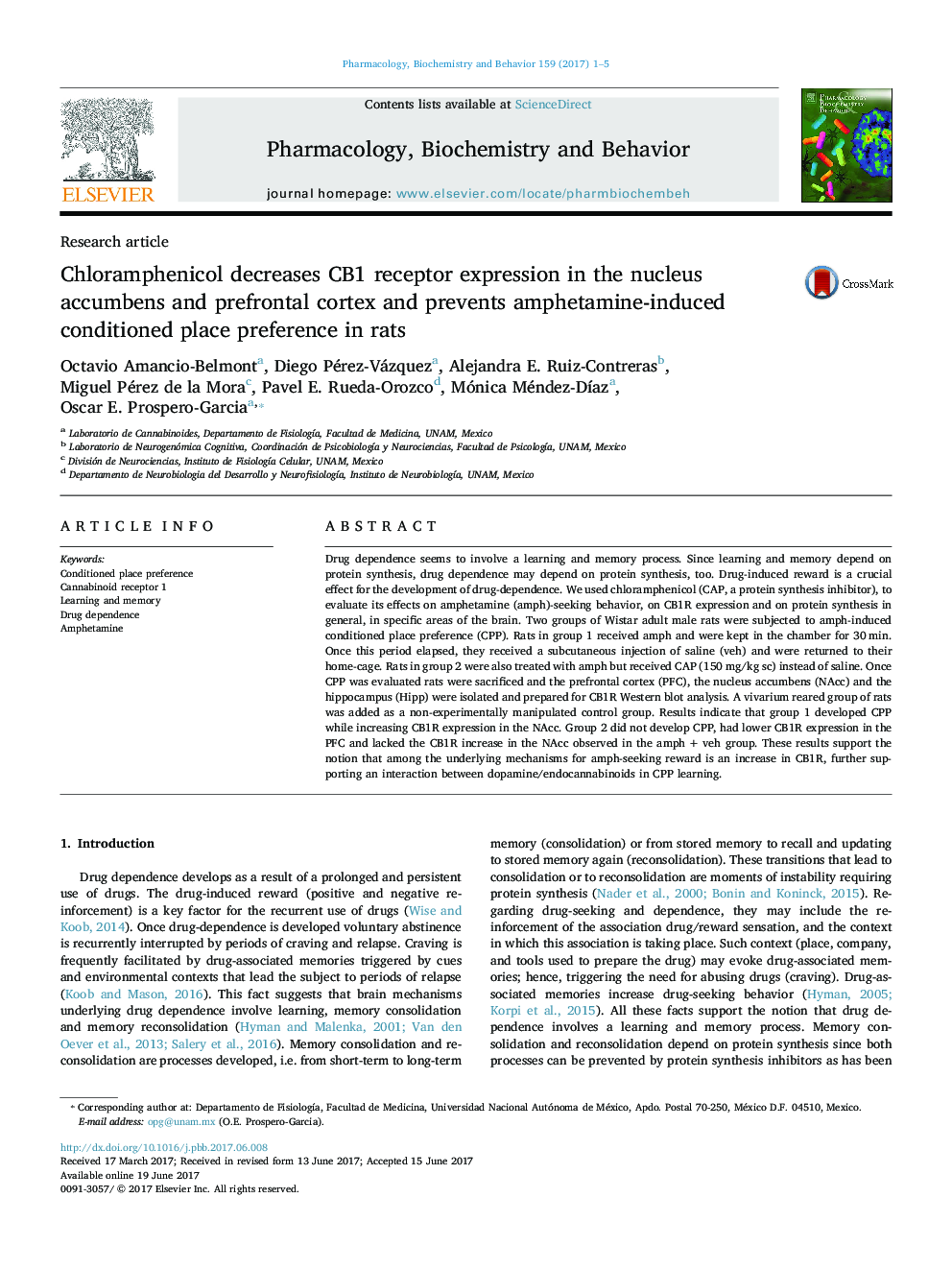| کد مقاله | کد نشریه | سال انتشار | مقاله انگلیسی | نسخه تمام متن |
|---|---|---|---|---|
| 5515158 | 1541828 | 2017 | 5 صفحه PDF | دانلود رایگان |

- Amphetamine induces conditioned place preference and increases CB1 receptor expression in the NAcc.
- Chloramphenicol prevents amphetamine conditioned place preference and CB1 receptor increase expression in the NAcc.
- Chloramphenicol reduce CB1 receptor expression in the PFC.
Drug dependence seems to involve a learning and memory process. Since learning and memory depend on protein synthesis, drug dependence may depend on protein synthesis, too. Drug-induced reward is a crucial effect for the development of drug-dependence. We used chloramphenicol (CAP, a protein synthesis inhibitor), to evaluate its effects on amphetamine (amph)-seeking behavior, on CB1R expression and on protein synthesis in general, in specific areas of the brain. Two groups of Wistar adult male rats were subjected to amph-induced conditioned place preference (CPP). Rats in group 1 received amph and were kept in the chamber for 30 min. Once this period elapsed, they received a subcutaneous injection of saline (veh) and were returned to their home-cage. Rats in group 2 were also treated with amph but received CAP (150 mg/kg sc) instead of saline. Once CPP was evaluated rats were sacrificed and the prefrontal cortex (PFC), the nucleus accumbens (NAcc) and the hippocampus (Hipp) were isolated and prepared for CB1R Western blot analysis. A vivarium reared group of rats was added as a non-experimentally manipulated control group. Results indicate that group 1 developed CPP while increasing CB1R expression in the NAcc. Group 2 did not develop CPP, had lower CB1R expression in the PFC and lacked the CB1R increase in the NAcc observed in the amph + veh group. These results support the notion that among the underlying mechanisms for amph-seeking reward is an increase in CB1R, further supporting an interaction between dopamine/endocannabinoids in CPP learning.
Journal: Pharmacology Biochemistry and Behavior - Volume 159, August 2017, Pages 1-5